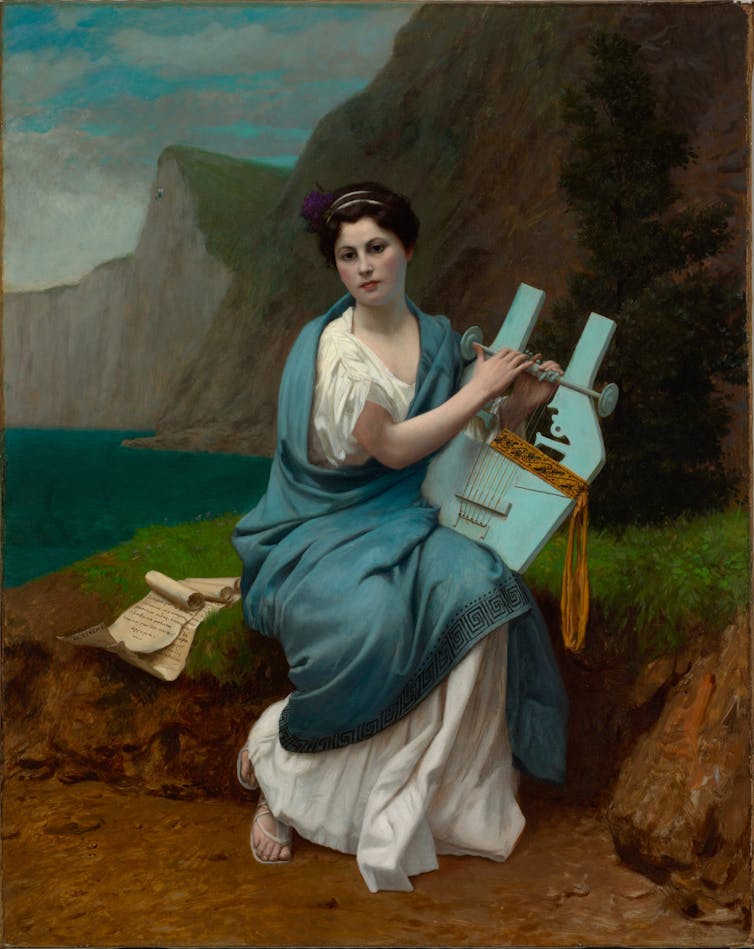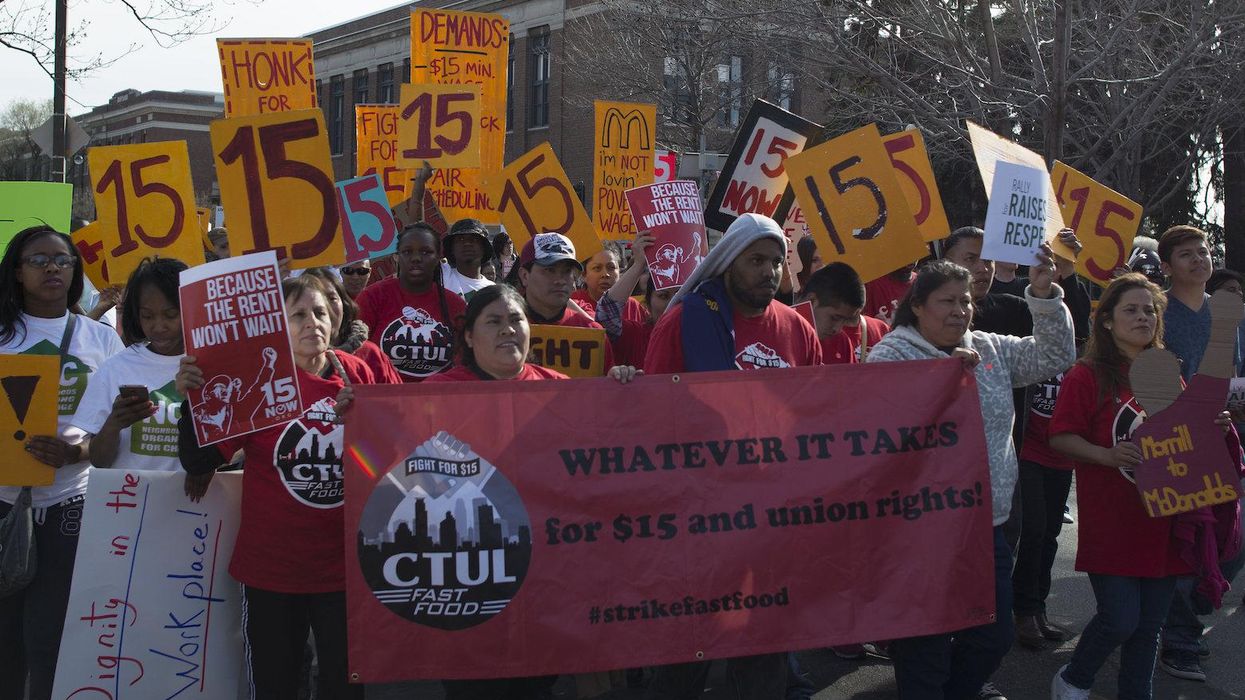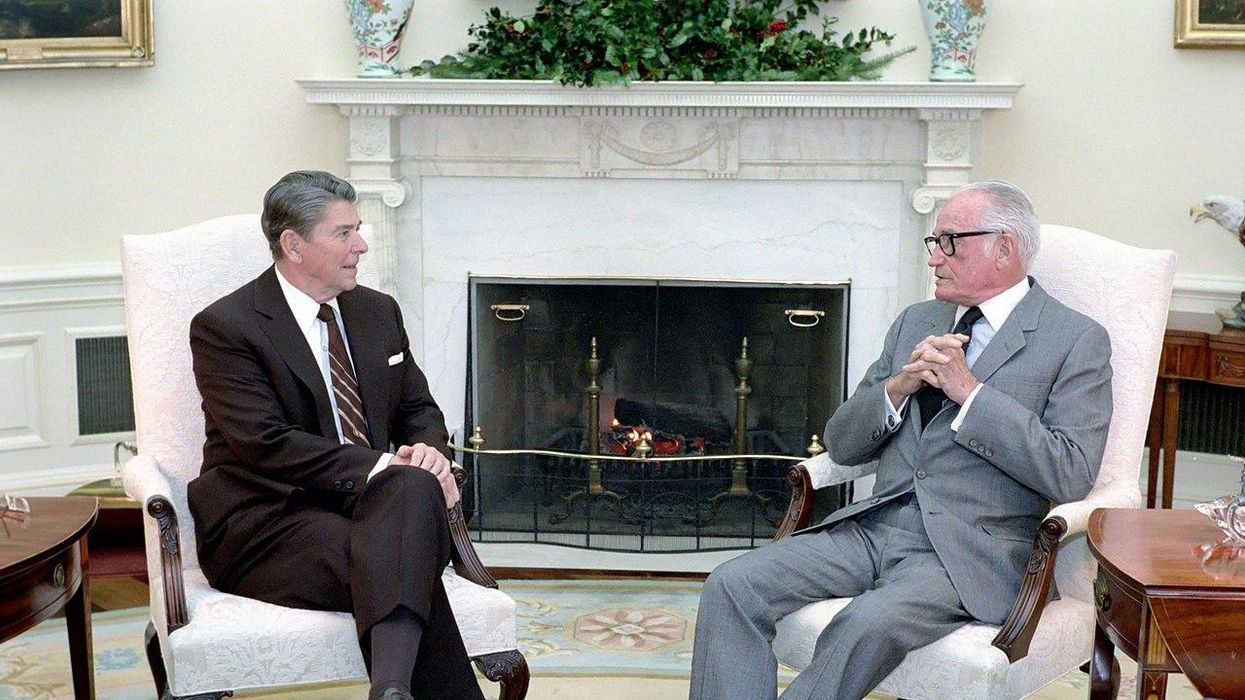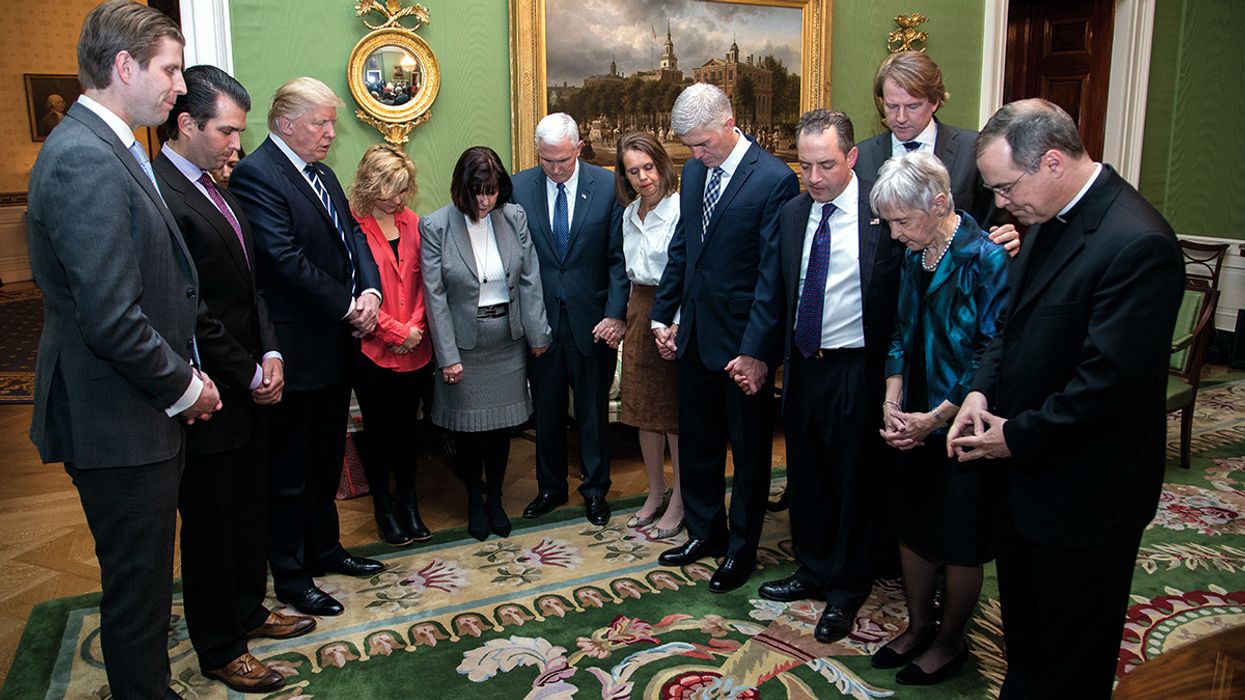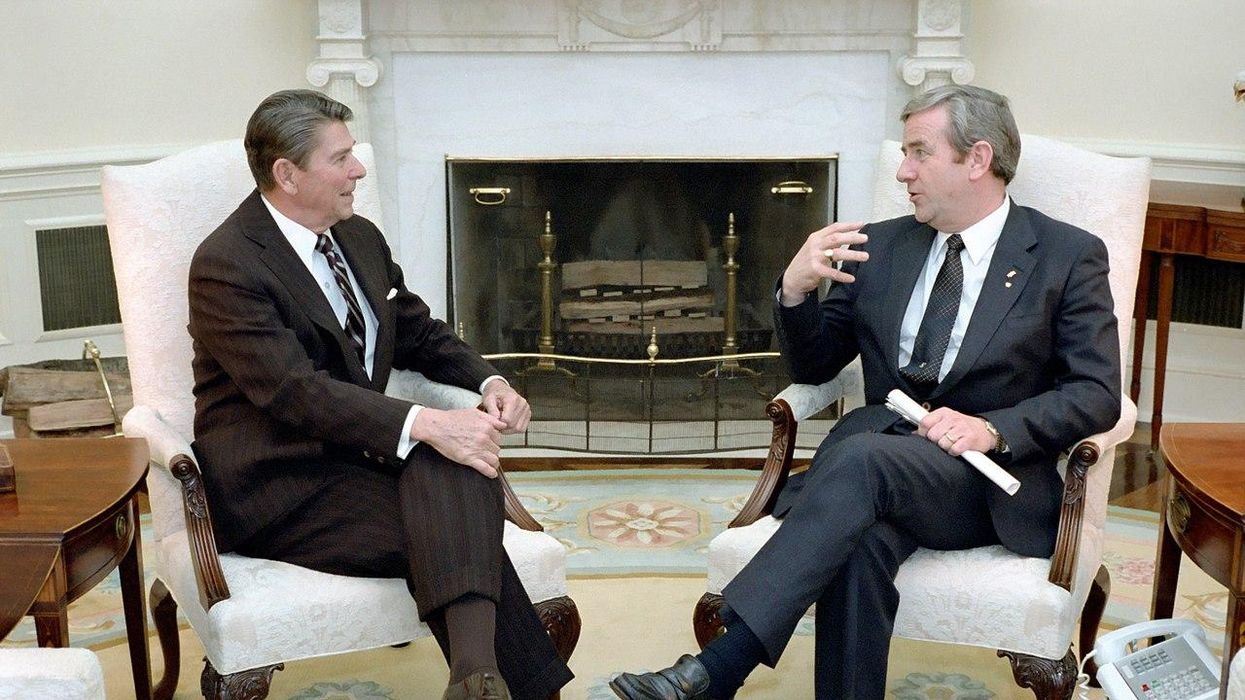'Crystallizing into a kind of quasi-fascist politics': How postliberalism made inroads with disenchanted leftists

Victor Orbán in 2012, Wikimedia Commons
Kathryn Joyce and
Salon November 22, 2022
LONG READ
On a Friday night in early October, in a downtrodden city in eastern Ohio, a speaker laid out a grim vision. At the height of 2020's first, most terrifying wave of COVID-19, an employee at a Chinese slaughterhouse led his coworkers on a walkout. For years, the state-owned company had abused its staff with continual video surveillance, punishing production quotas and demerits for bathroom breaks. Now it was casually disregarding their safety during a once-in-a-century pandemic. Following the walkout, the employee was fired, and then vilified through a PR campaign that denounced his protest as immoral and possibly illegal.
After a pause came the reveal: That hadn't happened in China, but in New York City's Staten Island; the hero wasn't a Chinese meatpacker, but a young warehouse worker named Chris Smalls; the villain wasn't the Chinese government but Amazon.com. The speaker went on, quoting from Karl Marx about "masters and workmen" and the "spirit of revolutionary change" before clearing his throat to deliver another correction: Apologies, that was actually Pope Leo XIII.
Both jokes were preface to a larger punchline, one that's particularly relevant after the 2022 midterm elections: This wasn't happening at a Bernie Sanders rally or a Democratic Socialists of America meetup, but a decidedly conservative conference at Ohio's Franciscan University of Steubenville, a center of U.S. right-wing Catholic thought. The speaker (and conference organizer) was Sohrab Ahmari, a Catholic writer best known for his 2019 polemic against conservatives insufficiently committed to the culture wars. The conference, "Restoring a Nation: The Common Good in the American Tradition," was a showcase for the modestly-sized but well-connected Catholic integralist movement, part of the broader current of conservative thought known as postliberalism.
Over the two-day conference, 20 speakers, including then-Ohio Senate candidate J.D. Vance, hammered home the argument that the same faith used to justify abortion bans and curtail LGBTQ rights also demanded a different approach to the economy, one that might plausibly be called socialist. Laissez-faire capitalism, speakers said, wasn't the organic force conservatives have long claimed but the product of state intervention; ever-expanding markets hadn't brought universal freedom but wage-slavery and despair; Franklin D. Roosevelt's New Deal — demonized on the right for generations — was in fact a "triumph for Catholic social thought"; social welfare programs were good.
All that might be striking enough. But the conference also served as something of a rebuttal to another gathering of right-wing intellectuals that had taken place a few weeks before: the third major National Conservatism conference, held this September in Miami. The two conferences — one in a hollowed-out former steel town, the other in a $400-per-night golf resort — represented two sides of what some partisans recently called a "fraught postliberal crack-up." Broadly speaking, these are ideological kin: members of the Trump-era intellectual "new right" who see themselves as rebels fighting an elite "Conservative, Inc." But it's a family in the midst of a feud, and the public split signified by the two meetings comes after months of less visible infighting over questions only hinted at in headline Republican politics.
Earlier this month, after the midterms failed to deliver a promised "red wave," those fights spilled into the headlines, as Republicans' disappointed hopes led to some of the first open shots in what's been a cold civil war over the party's future. Partly that fight revolves around whether Donald Trump or Florida Gov. Ron DeSantis will lead the GOP into the 2024 presidential election. But it goes much deeper than that, and the fight also has implications that go well beyond the right.
The midterms gave conservatives of all stripes something to claim, or to denounce. Activists who spent the last two years sniffing for "critical race theory" and "gender ideology" in public schools cheered DeSantis' re-election as proof that maximalist culture war is the key to Republican success. Anti-Trump conservatives pointed to culture warriors' widespread losses elsewhere as proof the GOP needs to come "home to liberal democracy." In a New York Times op-ed, Ahmari chastised conservatives who'd spent the run-up to the election mocking an overworked Starbucks barista as one likely reason that "the red wave didn't materialize." Vance's victory in Ohio was simultaneously touted as proof that right-wing populism remains viable and that "the culture war still wins."
Others called on Republicans to actualize their claim to be the new party of the "multiracial working class." The ecumenical religious right journal First Things exhorted conservatives to join picket lines. The conservative policy think tank American Compass unveiled a comprehensive "New Direction" economic agenda, repurposing lyrics from the Clash to propose things like realigning financial markets with the common good. In schmaltzier fashion, Trump strode into a Mar-a-Lago ballroom to announce his 2024 presidential candidacy to the "Les Misérables" anthem "Do You Hear the People Sing?"
And after days of lambasting "Washington Republicanism" for offering little of substance for the working class, Sen. Josh Hawley, R-Mo., issued a proclamation: "The old party is dead. Time to bury it. Build something new."
* * *
The right-wing populist wave that elected Donald Trump in 2016, like the U.K.'s Brexit vote a few months earlier, is typically described as a watershed moment for conservatism. But the fact of the Trump revolution arrived before the theory. Something had clearly changed in the political order, but Trump's impulsiveness and lack of coherent ideology or policy agenda created a vacuum that needed to be filled, retroactively, by intellectuals on the right.
A variety of themes emerged from those efforts. One was an "America First"-inspired rehabilitation of nationalism, long tarnished by its association with authoritarian movements in pre-World War II Europe. Another was heard in Steve Bannon's call to dismantle the "administrative state" of unelected bureaucrats who might stand in Trump's way. A third was the conviction that classical liberalism — in the historical Adam Smith sense of that word, which prioritizes individual rights, pluralism and free trade and which guided both parties for generations — had been a catastrophe, replacing traditional norms with a destructive free-for-all.
As postliberals like Notre Dame political theorist Patrick Deneen, author of the influential 2018 book, "Why Liberalism Failed," argue, classical liberalism promised peace and prosperity but instead delivered an era of haves and have-nots, swapping good jobs for dehumanizing gig work, empowering corporations to enforce a homogeneous global monoculture and promoting social policies that led people — particularly working-class people — away from traditionalist values like church, marriage and parenthood. In that light, conservative regions' higher rates of divorce, teen pregnancy and opioid deaths weren't evidence of red-state hypocrisy but rather an unrecognized form of class warfare.
The right's retconned Trumpist ideology also made a meta-argument: that the conservative "fusion" that had defined the Republican Party since the 1960s — uniting religious traditionalists, Cold Warriors and free marketeers in opposition to communism — had ultimately failed.
In 2019, Ahmari and a cadre of mostly conservative Catholic intellectuals gave voice to that argument through a group manifesto, "Against the Dead Consensus," which declared (several years before Josh Hawley) that the old conservative coalition was over and something new must take its place. Two months later, Ahmari wrote a follow-up, declaring never-Trump National Review writer David French the poster boy of that dead consensus, for being the sort of conservative who would defend Drag Queen Story Hours on the grounds of free expression. There was no polite, pluralist way to fight such an abomination, Ahmari argued, only a zero-sum approach to fighting the culture war "with the aim of defeating the enemy and enjoying the spoils in the form of a public square re-ordered to the common good and ultimately the Highest Good."
Language like "the Highest Good" was a hat-tip to integralism, a right-wing faction of Catholicism that aspires to effectively re-found America as a Catholic "confessional state," where state power is subordinate to the church and government is devoted to fostering public virtue and the "common good." Part of that project aims to replace the longstanding conservative legal ideology of constitutional originalism (as championed by the late Supreme Court Justice Antonin Scalia and his followers on the current court) with "common good constitutionalism" (primarily theorized by Harvard Law professor and former Scalia clerk Adrian Vermeule), wherein the law works as "a teacher" to instruct, and enforce, public morality. In other words, if the actual public doesn't want to live by conservative Christian ideology, a new governing class should impose it.
That premise has led other Catholics (conservative and liberal alike) to condemn integralism as reactionary and authoritarian. When integralists weren't being intentionally vague about their plans, critics charged — in a widely-discussed 2020 Atlantic essay, Vermeule declined to specify what common good constitutionalism would mean in practical terms — those plans are frightening, as in one integralist text that suggests limiting citizenship and the vote to members of the faith.
James Patterson, a political science professor at Ave Maria University, has written about integralism's troubled lineage going back to pre-World War II European fascist or authoritarian movements, including the Spanish Falangists that supported dictator Francisco Franco or the antisemitic Action Française that grew out of France's Dreyfus Affair. On Twitter recently, a Catholic parody account posted a satirical book jacket for an "updated and honest" edition of Vermeule's latest book with images of combat boots and a tank and an invented blurb from Ahmari: "Finally we can stop pretending what we're really talking about."
But the postliberal critique resonated beyond the cloistered world of right-wing Catholic discourse, intersecting with another post-Trump project: the rapidly-growing national conservatism movement. Led by Israeli philosopher Yoram Hazony, author of the 2018 book "The Virtue of Nationalism," the NatCons also see classical liberalism as fatally flawed — its central premise of a neutral public square, where no religion or culture reigns over any other, is nonsense, because liberalism is both a competing worldview and a slippery slope, inevitably leading to cultural revolution. As Hazony often argues, within two generations of the Supreme Court's ban on religious instruction in public schools, marriage rates and religious observance had plummeted and "woke neo-Marxism" took their place.
Since its first conference in 2019, NatCon has come to represent a series of positions: hostility to transnational bodies like the EU and UN; a quasi-isolationist skepticism of foreign entanglements; sharp reductions or a complete moratorium on immigration; realigning the free market with national interests (variously described); and, most importantly, replacing the illusion of a neutral public square with the conviction that, "Where a Christian majority exists, public life should be rooted in Christianity and its moral vision," as a recent NatCon statement of principles holds.
From the get-go, there were important differences between the integralists and NatCons. Catholicism makes a fundamental claim to universality (and some integralists speak wistfully of empire), which fits uneasily with NatCons' nation-centric vision. Integralists have far more ambitious economic plans than most NatCons would support.
But there were important commonalities too: a mutual opposition toward mainstream conservatism, a largely shared rejection of liberalism, a common desire to return Christianity to the center of American public life. Both camps swooned for Hungarian Prime Minister Viktor Orbán and saw his avowedly "illiberal" "Christian democracy" — with its expanded government power, sharp restrictions on immigration, repression of LGBTQ rights and pronatalist family subsidies — as the primary model to emulate. Both sides also benefited, to one degree or another, from the largesse of right-wing donors who are funding numerous projects (and candidates) on the "new right."
"If anti-communism bound together the old conservative consensus," said Jerome Copulsky, a research fellow at the Berkley Center for Religion, Peace and World Affairs, the new right's coalition "is animated by antiliberalism and a belief that a high degree of religious and cultural uniformity is necessary for social cohesion and political legitimacy."
But there are problems with building alliances on the basis of shared enemies, Copulsky warned. "The coalition-building is about the Venn diagram of who they don't like: liberals, 'woke' multiculturalists, non-traditional sexuality and gender roles. But as they move forward, their different understandings of what they want to put into place will bring out the tensions and contradictions of their alliance. The 'enemy of my enemy is my friend' attitude only goes so far."
* * *
Over the last year, that exact problem has played out through quarrels fought on social media, in new right publications and on conference stages. It was even visible in the difference between this year's NatCon conference in Miami and the one held a year before.
In November 2021, multiple new right camps converged in Orlando for NatCon 2. The heart of the conference was an evening panel featuring the nationalist Hazony and integralist Ahmari, as well as "anti-Marxist classical liberal" Dave Rubin and British neocon Douglas Murray, all discussing whether a new alliance could be forged. Hazony, an Orthodox Jew, had a surprising suggestion: Bible instruction must be restored in public school, as a crucial first step toward reasserting America's identity as a Christian nation and a "conservative democracy."
There were tensions, most notably around the fact that Rubin and Murray are both gay: would there be room, Rubin asked, for him and his family in this new right? But after reaching apparent agreement that the problem wasn't gay people per se but rather expanded trans rights or LGBTQ representation in schools, the session closed as it had begun, with the PA system playing "We Are Family."
That unity was short-lived. This September, when NatCon reconvened in Miami, the only panelist who returned was Hazony himself, reflecting a number of upheavals in the preceding months.
One seeming result was that this year's NatCon — the movement's largest to date — reflected a marked increase in hostility toward not just "gender ideology" but LGBTQ rights in general. In one plenary address, a seminary president declared that in order for conservatives to resist "the fantasy and folly" of transgenderism, they must also reject same-sex marriage: "He who says 'LGB' must say 'TQ+.'" Another speaker argued that the failure of any major U.S. institutions to denounce "the LGBT agenda" proved that America has become "basically anti-American." NatCon's own statement of principles, released just months after asking two gay men to help build the new right, defines marriage as only between a man and a woman.
In part, this shift reflected some conservatives' belief that NatCons' tent had gotten "a little too big." One right-wing website used a photo of the 2021 panel to warn about "the quiet rise of LGBTQ influence in Christian and conservative circles." Rubin had also become the center of a conservative firestorm, after he announced that he and his husband were expecting the birth of two babies being carried by surrogate mothers — news that sparked not congratulations but widespread denunciations of both Rubin and any conservative who stood by him.
But the altered mood also reflected something else, Hazony told Salon: The Supreme Court's June decision overturning Roe v. Wade had opened a new world of conservative possibilities, and the sense that it might be "possible to restore an earlier constitutional order." Post-Dobbs, conservatives giddily discussed which Supreme Court precedents they might topple next, and the 2015 Obergefell decision that had legalized same-sex marriage nationwide was high on the list. To Hazony, it suggested a rapid revival of the desire to reassert biblical values in the political sphere. Conservatives wanted to go for it all.
In his own conference address, Hazony called on conservatives to commit to being "fully Christian in public," arguing, "The only thing that is strong enough to stop the religion of woke neo-Marxism is the religion of biblical Christianity." For the politicians in attendance — including DeSantis, Hawley and Florida's two Republican senators, Marco Rubio and Rick Scott — that meant not just mouthing platitudes about God-given rights, but insisting that American freedom comes from the Bible. Less than an hour later, Hawley happily obliged, declaring, "Without the Bible, there is no America," with a fervor matched by other speakers eagerly reclaiming the label "Christian nationalist" as a battle cry.
Perhaps even more conspicuous were the missing Catholic integralists, who in 2021 had provided much of NatCon's intellectual framework. This year, their absence prompted so many subtle, and less subtle, asides throughout the conference that one confused audience member raised his hand to request an explanation.
A British priest who said he'd been invited to affirm that, contra some people, Catholicism and national conservatism go together just fine, suggested that the integralists' seeming boycott amounted to useless theological squabbling: Who cared "how many integralists can dance on the head of a pin"? In a breakout session, another Catholic panelist suggested it was "cringe" for integralists to believe they'd ever set the moral framework for a "basically Protestant nation."
The biggest rebuke came from Kevin Roberts, the recently-appointed president of the Heritage Foundation, the great white whale of institutional conservatism, which has been shaping Republican priorities since the first years of Ronald Reagan's presidency. Roberts' presence at the conference was itself a coup. Two years earlier, Hazony said, Heritage had attacked him for "importing nationalism" into the U.S. Now the foundation had underwritten much of this year's conference, had met with NatCon leaders to discuss their statement of principles and had published a 20-page booklet recounting a conversation between Roberts and Hazony on "Nationalism and Religious Revival." In a line widely quoted after the conference, Roberts declared, "I come not to invite national conservatives to join our conservative movement, but to acknowledge the plain truth that Heritage is already part of yours."
Roberts, who describes himself as a Catholic populist, also admonished his missing coreligionists ("Integralists, heal thyselves!"), accusing them of rejecting "conventional constitutional" politics and seeking to "subordinate the state to an institutional church" in ways that would discredit both. Alluding to the fact that many prominent integralists are recent Catholic converts, Roberts continued that, while he shared many of their frustrations, "and I certainly rejoice in their religious conversion," their zeal had "led them into error."
The integralists fired back. At the start of the Miami conference, Ahmari tweeted that he was "emphatically not a 'NatCon.'" The movement's academic Substack published a long theological rebuttal to Roberts' claim that integralists wanted to establish a theocracy. Another writer asked whether NatCon's big tent still had room for integralists. When Gladden Pappin, cofounder of the conservative journal American Affairs and a professor at the University of Dallas, repeated the question on Twitter, Hazony responded with exasperation: Pappin could answer that question himself, since he'd spoken at a NatCon event several months earlier.
"In my view, conditions of ongoing animosity and hostility between NatCon and the five or six of you would be a colossal waste of time," Hazony wrote. "However, if you decide that a strategy of hostility, boycott or insults is the way to go — I can assure you that a wiser Catholic intellectual leadership will arise to take your place."
* * *
"There is clearly some kind of break," Hazony told Salon, but he saw it arising primarily from the integralists' side. Several had been invited to sign NatCon's statement of principles in June, but all had refused. Ideological differences that were "soft-pedaled a year or two ago" were suddenly getting "a high-octane emphasis."
For Hazony, the primary issue was about how conservatives understand China, the rising superpower that NatCons see as America's No. 1 rival. Their conference had banned all speakers who are "pro-Xi, pro-Putin, racists or antisemites," although that standard seems malleable at times. (As Political Research Associates' Ben Lorber reported, this year's NatCon included a meditation on the viciously xenophobic French novel "Camp of the Saints," approving mention of antisemitic Action Française leader Charles Maurras and an address by a former Trump speechwriter fired for alleged ties to white nationalists.) But some integralists, Hazony charged, had "always had a soft spot for dictatorship, for imperialism and for China," and in recent months that had become impossible to ignore, as members of the movement wrote articles praising China's government or culture.
Then there was Compact Magazine, the hybrid "radical American journal" Ahmari co-founded last March with fellow Catholic Matthew Schmitz and Marxist populist Edwin Aponte. Its professed agenda was to wage "a two-front war on the left and the right" and promote "a strong social-democratic state that defends community — local and national, familial and religious — against a libertine left and a libertarian right."
Although Compact has declined to specify who funds the magazine, a source familiar with its operations told Salon that it was launched with significant support from right-wing tech billionaire Peter Thiel — who has funded numerous other "new right" projects, from NatCon conferences to the political campaigns of J.D. Vance, Blake Masters and Josh Hawley — and Claremont Institute chair Tom Klingenstein (another top NatCon donor). Klingenstein did not respond to requests for comment. A source close to Thiel denied that Thiel has directly funded Compact, but couldn't rule out the possibility that an entity Thiel funds has in turn donated to the magazine. In a statement, Ahmari said, "Compact is an independent, for-profit publication supported by our subscribers. A group of investors helped us jump-start it. We respect their privacy and decline to name them."
Both Thiel and Klingenstein spoke at NatCon this year, and a handful of other NatCon speakers attended the integralist conference too. But on the whole, Hazony said, Compact was a bridge too far for most NatCons. While many in the movement were open to "rethinking the commitment to the free market as an absolute principle," and might even support targeted business regulations, he said, there was "no appetite, no capacity among nationalist conservatives to accept the ideal of social democracy as an alternative to the market mechanism."
Integralists had their own complaints. Some also involved foreign policy questions, like whether NatCons' enthusiastic defense of Ukraine amounted to a creeping neoconservative revival, or whether their strident hostility to China reflected warmed-over Cold War politics. But their main concern was more fundamental: NatCons, they charged, were abandoning the populist promise of Trumpism for a seat at the establishment table.
To be sure, NatCon 3 featured critiques of big business, but, with limited exceptions, most amounted to dragging "woke corporations." Ron DeSantis (introduced in Miami as "the future president") spoke dutifully about how free enterprise should be seen as a tool to help "our own people" rather than an end in itself. But his real firepower was saved for war stories: his battle with Disney over Florida's "Don't Say Gay" law, his resolution banning state pension funds from weighing environmental or social justice concerns in investment decisions, a promised law to help Floridians sue tech companies that commit "viewpoint discrimination."
Other speakers called for blacklisting banks that disinvest in fossil fuels; seizing universities' endowments; and making it illegal for employers to ask if applicants attended college, in order to disincentivize young people from entering the "inherently liberalizing environment" of higher education. (In a more recent example, after contrarian billionaire Elon Musk bought Twitter and numerous companies stopped advertising on the platform, Republicans suggested that congressional hearings into "leftist corporate extortion" might be in order.)
To Ahmari, this amounted to "fake GOP populism." "This may sound strange coming from me," he said — that is, the guy who made his name by denouncing "David Frenchism" — "but it's just culture war." He was increasingly convinced that whipping up Twitter wars over corporate gestures towards progressive politics was the kind of conservatism "designed to ensure" that nothing important ever changed. "It's easier to pick a fight over Disney than to take on corporate power as such."
"There is this emerging sense on our side," Ahmari continued, "that the old Reaganite establishment is reconsolidating itself under the banner of NatCon or populism, but the agenda and personnel haven't changed." For instance, he said, the Heritage Foundation's Kevin Roberts calls himself a populist, but this summer tweeted the Reaganesque claim that "Government is not the solution, but the obstacle, to our flourishing." If the new right wanted to "get in bed with Heritage," Ahmari wrote this summer in an essay lambasting "Fusionism 2.0," that was fine. But then it didn't get to call itself populist; he refused to be such "a cheap date."
Integralists also expressed a worry shared by radical movements since time immemorial: Their language and ideas were being co-opted and neutralized by either establishment Republicans or elements of the new right all too eager to go mainstream.
Now that postliberals had made certain policy ideas "trendy," said Gladden Pappin, who's written extensively about replicating Hungarian social policies in the U.S., others on the right were "trying to fill them with concepts that bring it back down to classical liberal conservatism." You'd see people suggesting, he explained, that the foundation of conservative family policy should be religious liberty and right-to-work laws, or libertarians saying, "You know what supports the common good? Radical free markets."
Postliberals weren't the only ones drawing that conclusion. When Roberts told NatCon that Heritage was part of their movement, supporters celebrated it as "the moment they went mainstream." But other attendees remarked that they were increasingly unsure of how NatCon actually differed from regular "con." New York Times columnist Ross Douthat warned that the movement risked being "reabsorbed into the GOP mainstream without achieving its revolution," so that a hypothetical President DeSantis might call himself a national conservative while pushing through more tax cuts for the rich. New York Magazine described this year's conference as having "the flavor of a party convention," albeit one headed toward a "middle ground between Reagan and Mussolini."
Perhaps this evolution was both natural and inevitable. If national conservatives originally intended to build a new right, James Patterson wrote recently, its current, apparent reconciliation with fusionism reflects changed political realities. In 2019, when NatCon held its first conference, the Trump presidency was in full swing and the movement sought to fill the ranks with true believers. By their next meeting in 2021, Republicans were newly out of power and eager to forge alliances to win it back. This year, Patterson noted, the Dobbs decision demonstrated that there might be life in the "dead consensus" yet, since a Supreme Court dominated by old-line originalists — not their "common good" critics — had just delivered the right's biggest victory in decades.
"They're learning the lessons of why the last fusion collapsed," said Jerome Copulsky: Different factions of the right can work together easily enough until their movement begins to gain power. Then they come to realize "that someone's policies will be implemented, that there will be winners and losers in this coalition."
The NatCons feel pretty sure which of those things they are. At one point during this year's conference, Hazony recalled, Southern Baptist Theological Seminary president Albert Mohler — perhaps the preeminent voice of the evangelical right — excitedly told him, "This is what it was like in the 1980s when the Moral Majority was first getting organized." In a midterm postmortem with British outlet The Spectator, Hazony sidestepped the question of whether Trump or DeSantis would win the right's civil war. NatCons would rally around Trump, or someone else, he said; either way, their ideology would lead.
* * *
In response, integralists vowed to build a coalition of their own. "NatCon is trying to put the constellation of right-wing organizations back together," said Pappin, "whereas I'm trying to articulate a political vision that could be successful at governing and also oriented towards the common good."
Considering various constituencies that have swung right in recent years — like law-and-order Latinos in Texas or the Midwestern white working class — Pappin said he was more interested in finding ways to keep them in the fold. That could happen through "something that a lot of Republicans would call left-wing economics," he suggested. "Can Republicans articulate a vision that might be more traditional morally, but also favor a supportive state?" Compared to efforts to reassemble the old right-wing fusion, Pappin asked, which was real coalition building?
"U.S. conservatism has so long been associated with pro-capitalist policies that we sometimes forget that conservative movements in other countries can look extremely different," said University of Michigan political scientist Matthew McManus, a progressive who's written extensively about the modern right. Postliberals' favored models in Hungary and Poland demonstrate that, he said, with expansive social welfare programs tied to "socially conservative and exclusionary practices."
It's not unthinkable that such a political gumbo might also work in the U.S., said University of Oregon professor Joseph Lowndes, co-author of "Producers, Parasites, Patriots." A clear lineage can be traced, he said, from the populist presidential campaigns of paleoconservative Patrick Buchanan in 1992 and 1996 through the Tea Party to Trumpism to projects like Compact today. "Not to put it in crude Marxist terms, but when you're under the material conditions of a second Gilded Age, when you have real gaps in wealth and neoliberalism becomes less and less credible," Lowndes said, "it opens up space for something that could wed the cultural politics of conservatism to a social order that seems more humane."
To that end, Patrick Deneen's forthcoming book, "Regime Change: Toward a Postliberal Future," calls for replacing "the self-serving liberal elite" with a "new elite devoted to a 'pre-postmodern conservatism'" that's aligned with the working class. Compact's own hybrid politics, said Ahmari, represents a similar attempt to forge a "positive vision" that is "liberated from the dogmas of the establishment right" and thus creates space for alliances with the left.
In practice, that has meant that Compact publishes essays on unions or trust-busting from conservatives and lefties who agree to disagree about cultural questions like abortion and same-sex marriage. Ahmari — who's undergone his own political odyssey, from socialist to neocon to postliberal, and increasingly these days, something like post-conservative — says he hasn't changed any of his positions on social issues but believes that building economic alliances can "lower the temperature" of those disagreements. "If you just have less corporate power," he proposed, "then whatever the corporate agenda is, wokeism or whatever, it doesn't bear down on ordinary people so much."
As for conservatives who dismiss their vision as a pipe-dream, Ahmari said there are "far fewer Americans than these folks think who favor the idea that the government is always an obstacle" and far more who might be mobilized by the resurrection of a mid-century conservatism at peace with the New Deal. After all, he said, "the last time Catholics voted as a united bloc was for the New Deal coalition."
That's not quite the whole story, argues James Patterson, recalling substantial Catholic infighting over FDR's agenda. But beyond historical quibbling, he says, the postliberal conviction that there is an untapped reserve of fiscally liberal, socially conservative voters waiting for something like integralism ignores the fact that most people who fit that demographic aren't the proverbial white working class but rather immigrants and people of color likely to be suspicious of a movement that "cites the Francisco Franco right." (Not coincidentally, Lowndes notes that Pat Buchanan's father was a legendary Franco fan and Buchanan himself called the dictator a "Catholic savior" and "soldier-patriot.") In an earlier critique of the new right's courtship of the working class, the left-wing journal Jacobin argued that right-wing populism is only viable in the context of "historic levels of demobilization and disorganization for the working class."
Perhaps, Patterson said, the integralists were setting their hopes on J.D. Vance (as of this month a senator-elect), and the possibility that their movement might influence, or even staff, his Capitol Hill office. After all, a sub-tenet of integralism is the contention that the movement doesn't need a majority, if enough believers can place themselves inside "the shell of the liberal order" to effect "integralism from within."
That's one answer, said Copulsky, to the question of how either side of the new right expects to "shape a culture when the majority of the public doesn't agree with you anymore." Neither the NatCons nor the integralists represent a majority position, "so they either have to go convert a bunch of people or use the coercive power of the state to make people follow their rules."
"People are always like, 'Who cares about the integralists? No one's going to vote for this,'" added Patterson. "But what if they don't know they're voting for it? What if J.D. Vance doesn't even fully know what he's getting himself into?"
* * *
Over the course of the new right feud, both sides have accused the other of betraying the cause. Integralists accused NatCons of being closet liberals and channeling populist anger towards safe external enemies. A NatCon speaker dedicated a podcast episode to arguing that "Catholic Integralism Is an Op," intended to "collect and discharge" Trumpist energies in ways "that are ultimately harmless." In short order, the allegations became as tangled as leftist infighting that dates back to the Russian Revolution. (Online, it became inscrutably meta, as when one "crypto-fascist" "anti-leftist Marxist" launched a Substack series charging that all dissident publications serve as an "exhaust valve for middle-class discontent.")
Shortly after Compact launched last spring, journalist John Ganz called the magazine an "unholy alliance" that recalled previous efforts to combine "socialism + family, Church, nation." Specifically, Ganz wrote, it sounded like a 19th-century proto-fascist French movement that synthesized left and right positions and whose adherents often called themselves "national socialists" — a term, Ganz notes, "that once sounded fresh and innovative."
Other observers pointed to a more recent analogue: the New York critical theory journal Telos, founded in the late 1960s by New Left devotees of Herbert Marcuse, but which by the 2010s was better known for its association with far-right thinkers who inspired the alt-right.
Telos' metamorphosis, explains Joseph Lowndes, who watched some of it happen, wasn't a simplistic example of "horseshoe theory" but rather the result of the people behind the project, frustrated by their search for an effective form of dissent, accepting "easy, far-right answers to complicated social and political questions." After Trump's election, Lowndes wrote about Telos' strange history as a warning: At this precarious moment in history, he argued, there were "two off ramps" from the vast inequalities of neoliberalism. One led to a very dark place.
Overall, Ganz views the postliberal movement as a "boutique intellectual project," a "tiny sect arguing with other intellectuals." But the possible inroads it might make with a disillusioned "post-left" were worrisome, he told Salon: "There's this broader thing going on where disenchanted leftists, who view their leftism as cultural revolt against liberalism, are becoming actually, substantially conservative. And they're crystallizing into a kind of quasi-fascist politics."
Beyond publishing articles about how the GOP might reconcile with unions, Compact has also published work by monarchist "neoreactionary" Curtis Yarvin as well as a number of leftists, or "post-leftists," who generally agree with the right on social issues: anti-immigration social democrats, anti-"gender ideology" radical feminists, leftists who see "wokeism" as "capital's latest legitimating ideology" (e.g., union-busting companies that fly Pride flags or post about Black Lives Matter). In September, the magazine published an essay exploring, with cautious sympathy, a hashtag movement called #MAGACommunism, which calls on leftists to abandon "toxic" social progressivism in favor of "the only mass working-class and anti-establishment movement that currently exists in America."
"[N]ot quite what I was going for," tweeted Compact cofounder Edwin Aponte in response. By then, Compact's resident Marxist had been gone from the project for several months, after disagreements over the leaked Dobbs decision forced him to conclude that his politics were irreconcilable with those of his colleagues and ultimately led to the dissolution of their partnership.
Aponte told Salon that when he first joined the project, as a Bernie Sanders leftist disillusioned with the collapse of that movement, he and his co-founders agreed to avoid issues like abortion "because, per them, they weren't interested in relitigating settled issues. But the second the Dobbs decision dropped, it was no longer a settled issue." When Compact published what Aponte saw as a "weirdly triumphalist article" proposing that Republicans respond to the fall of Roe by creating Hungary-style family subsidies, he had something of an epiphany.
"It revealed what they really cared about, and it was something highly specific and normative: that you can have a generous and materially comfortable state, as long as all these moral and cultural conditions are met," said Aponte. "On the surface, we wanted the same things. But the motivations behind it were different." It wasn't that he doubted their sincerity, he said, so much as that "the engine behind it is what goes unsaid, and is what actually matters more." For his right-wing partners, he said, "those material politics are a means to an end, rather than an end. And the end they have in mind is not something I think is good or just."
Exactly what that end is, Aponte doesn't feel sure, but he saw some troubling signs.
In late September, Compact held its first public event in an arthouse theater in downtown Manhattan: several dozen 20-somethings gathered in a basement screening room to listen as Anna Khachiyan, co-host of the quasi-socialist podcast Red Scare, introduced "heterodox economist" Michael Lind for an academic lecture about models of social organization.
It was one version of the weird, politically amorphous downtown scene where, as journalist James Pogue described in Vanity Fair last April, "New Right-ish" politics and converting to Catholicism "are in," and where Peter Thiel may or may not be "funding a network of New Right podcasters and cool-kid culture figures as a sort of cultural vanguard." (Earlier that month, the New York Times reported that a new Thiel network is channeling millions towards media projects, including journalism and "influencer programs.")
It's a scene suffused with a sense of ironic transgression, Ganz says, giving a "performance quality" to everything, "like part of this cultural revolt is about making yourself into a spectacle." For example: in recent weeks Khachiyan has promoted a "based literary journal" that includes an extended interview with her alongside a celebration of Kyle Rittenhouse and an exploration of whether the blood libel — the centuries-old conspiracy theory that Jews ritually murder Christian children — might actually be true.
"I don't think that white working-class voters who are even a little bit Trumpy are interested in this ideology," said Ganz. "It's a hipster thing trying to pass as working-class stuff, so it's kind of fake, but kind of scary. I don't really know where to situate it."
Throughout history, Aponte said, "Authoritarian reactionary movements have gained support and energy from such incoherence and contradictions." This movement seemed to have sufficient gravitational pull, he said, that "everyone starts falling in and gradually being converted. I've seen it happen with people I thought were really good leftists, who, next thing I knew, had turned into racists, transphobes and homophobes."
"Everyone's kind of on board, the specifics are blurry, but the direction is titled one way, whether anybody wants to acknowledge it or not," Aponte continued. "That's something we haven't seen in a long time. It's a vibe, and the kids love it, because the kids are not happy — justifiably so. It's a really spooky and dangerous time, and I feel foolish for participating. I feel bad."
In the end, what unites the right's various factions will likely hold more weight than what divides them. Generally speaking, said McManus, the right is better than the left at putting aside its internal differences to unite against a common foe. In J.D. Vance's speech in Steubenville, he called for a ceasefire in the new right's civil war. "We can't be so mean to one another," he told the audience, noting that all conservatives who challenge GOP orthodoxies are taking risks. They were right to be on guard against "Fusionism 2.0," Vance acknowledged, but perhaps the best way to prevent that was "being charitable to one another's ideas." After all, they had real enemies to fight, like transgender health care.
"We need to do more on the political left to inoculate people against the temptation to move in these radically right directions that can masquerade as a genuine critique of the status quo," said McManus. "Some people are being very foolish in toying around with these movements," perhaps because they don't take new right fulminations against trans rights or its idolization of Viktor Orbán seriously, believing "they won't actually go that far." In fact, McManus said, "There's a very large wing within these movements that wants to go exactly that far. Some of them want to go even further."
On Twitter, Aponte tried such an inoculation, addressing warnings to "all my heterodox former-leftist friends" that he'd "seen what lies behind the curtain." "[B]e careful with whom you ally," he wrote. "Their enemies might be your enemies for a just reason, but the devil is in their programmatic details."
CATHOLIC POLITICAL ECONOMY




